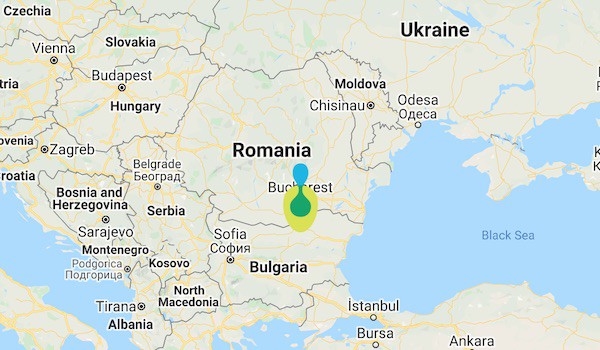Because a lot of people who want to lose weight as soon as possible, if they can yesterday, ask me why I do not recommend more sport, I would like to clarify the concept of sport for losing weight.
Sport is very important in weight loss, but by sport we only maintain the results from our eating behaviour.
Sedentariness is a basic cause of the fattening, but we cannot lose weight only by making sport.
Studies that have tried to prove that more physical activity helps losing weight failed to show efficacy, at least for two reasons:
- more sport means more hunger, that most don’t knows how to control properly
- and, of course, more sport means that you’ll have to do more and more to see any results because of the physical adaptation of the body to each of your training session
Although many studies have tried to show that the link between hunger and sport does not exist, let’s be serious!
– How many people did a serious hour of cycling, tae-bo or step aerobics without wanting to temporarily move to the refrigerator?
Of course, it is a fantasy that passes after the first banana, but it is so common that researchers who claim that sport actually decreases the hunger feeling probably did not do too much sports themselves in their lives.
Because we feel hunger after exercise, maintaining optimal competition weight is sometimes more difficult than the training itself.
Athletes who practice sports with weight categories (boxing, judo, weightlifting) or those from sports with “artistic impression” (skating, dancing or even swimming) – in which the body of the athlete is practically visible, as the actual sports clothing cannot hide any extra pounds – can certify the fact that doing more sports does nothing to help them losing weight, increasing both their hunger and their aversion to the scale.
Of course, there are many who think that these athletes eat more than they need, putting their performance in jeopardy either because they do not know how to eat properly, or because they do not have enough will to eat properly.
But many of these many, pointing to the straw in the eyes of performance athletes who are struggling to maintain their optimal competition body weight, carry a huge beam with themselves, often being overweight and sedentary, but with a big big mouth.
Insulin resistance is the reason why I do not recommend more sport and the reason why these athletes get fatter despite the huge amount of physical exercise they do on a daily basis – and I will explain it below.
A sedentary muscle cells cannot feed on glucose because the membrane of an unused skeletal muscle cell is kept impermeable for nutrients. Maybe we can debate the idea if the social aid works or not at the society level, but the human body does not feed cells that don’t work.
When you seriously do sports (that is, at least to cannot check your Facebook account while you are sitting on a plank position…), the body starts to open capillaries in areas of unused muscle cells, they get some nutrients, start to contract asynchronously to those you use regularly and you start to tremble.
To start to tremble, the muscle cells you usually use should be oxygen-free, ie the effort you make must be intense enough.
And because the fat used until then in the low and medium intensity effort can no longer be burned in the absence of oxygen, the body starts to use glycogen (glucose being the only one that can be burned without oxygen, but with an 18 times smaller efficacy than in the presence of oxygen).
You are gasping for air, with tired oxygen-free abruptly awaken muscle cells, but if you resist and continue, you start to tremble and feed these several newly active muscle cells – temporarily.
If you keep the discipline up and gradually start to do this regularly, the body will feed them regularly and your metabolism will gradually increase. But you cannot lose weight only by this metabolic increase which is quite tiny. What this gives you is a metabolic flexibility that will allow some room for now and then exceptions allowing you to eat a bit more while weighing the same. The reverse – metabolic decrease – meaning that you start weighing more and more while eating less, and this can happen even in professional athletes.
That’s why we need intelligent trainers and nutritionist who know what they are talking about and who, if possible, have heard of malonil-Coa in their lives. As if they haven’t heard of this little thing, they do not know how you – or them for that matter – could lose weight without some form of obvious or hidden starvation, quoting and selling “personalized” diets copied from Dr. Google.
Returning to performance athletes and amateur athletes, their active muscle cells are many, and their brain knows this, because it needs to feed them daily.
When doing regular sports, the membranes of an increasing number of muscle cells will be kept permeable to glucose even in the presence of fatty acids, because those cells work and consume everything they receive by making glycogen deposits and burning all the incoming fats. This parallels the intensity and amount of physical effort made by the athlete.
When the level of effort decreases, there is a metabolic inertia: the muscular cells that aren’t working today still receive the same amount of fatty acids they received and burned yesterday, when they were working. But today these cells rest, and the metabolic reactions that should have burned these fatty acids do not happen in the absence of physical effort, thus are deposited in the cells.
This is why, the higher the physical effort you make on a regular basis, the more care you must have with your food when your decrease the physical effort level.
This is why, many athletes gain weight after competitions, and this is why amateur athletes have to choose very carefully the level of sport they can maintain on the long run. Because, if they do not chose it carefully and train chaotically, the membrane permeability of their muscle cells will decrease much more than that of sedentary people simply because an athlete is delivering much more fat to the muscle on a daily basis.
A performance athlete who eats chaotically endangers his performance, and one who closely adapts his diet to the level of effort increases his chances of optimal performance. And the trainers or amateurs athletes can get the same consequences if they do not adapt their diet in the days without physical effort.
In sedentary people, a sudden intake of fatty acids in the muscle cell makes their membranes impermeable, lowering their active muscle cells percentage because the delivered fat is being stored in muscle cells without the much needed muscle contraction.
When these former active muscle cells become full of fatty acids (with the marbled appearance of a piece of beef flooded with fat), they begin to have dyslipidemia, the fat being “stored” further in the blood and – if they insist – in the liver.
Please mind that the many weight loss electrotherapy procedures available today actually create more metabolic problems than they solves, and if you do chose such “shortcuts” instead of or on top of working out, you should really consider a consultation to a qualified nutritionist to not throw your metabolism down the trash can.
Researchers recommend for maintaining weight (attention, “for maintaining weight”, not for losing weight!) between 250 and 350 minutes of sports per week – that is an average of 50 minutes a day.
And “the dogs bark while the bear keeps on moving”: that is, most people couldn’t care less about the researchers recommendations related to anything that is not a priority, and therefore the vast majority becoming increasingly sedentary and, of course, fatter and fatter.
People are not more sedentary because they are stupid, but because they are so stressed, tired, busy to prioritise their time at least to walk their dog (if they have one), much less to do sports – before or after work, take the children to school, film and/or park, to went to visit their parents or to go to an art exhibition. There are so many things to do and so little time.
Still, you will never “find” the time for anything, if you want time you must “make” it.
And if you would make the time to regularly do physical activity you would be less fatigued, you would increase your resistance to stress, counteract some of the harmful effects of smoking, increase your level of focus and discipline which would help you gradually become less busy thanks to the increased efficacy, and keep you away from cardiovascular disease, diabetes, Alzheimer’s or cardiovascular disease.
However, this sport drudgery would not help you lose weight by itself, whatever it is. It would help you keep the results you achieve by eating properly.
By weight loss efficiency:
- the best combination is: right nutrition + right sports
- followed by: right nutrition without sports
- then followed by: right sports without nutrition
Because of insulin resistance and increasing hunger sensation after sports, chaotic sport practice can have more damaging consequences than sedentariness.
In my first book, “5 Gears Diet”, I detailed how we can do sports in order to lose weight effectively, and I did that because, as I said above, people who do sports without a correct plan have more problems in maintaining their weight than those who do less or none.
Instead of a marathon of hours of mindless sports, it is more efficient to practice a shorter but smarter training actually build up and thought over by someone qualified in sports, and then simply do something else with your life besides going to the gym.
Or you can continue to do two or three consecutive hours of sports the same day, hoping that you will burn more calories and that you will lose weight faster, while everything you gain will be the a harder and harder ability to maintain your body weight.
Sport is good for health, but less and more intense is a thousand times more effective than more and idly.



